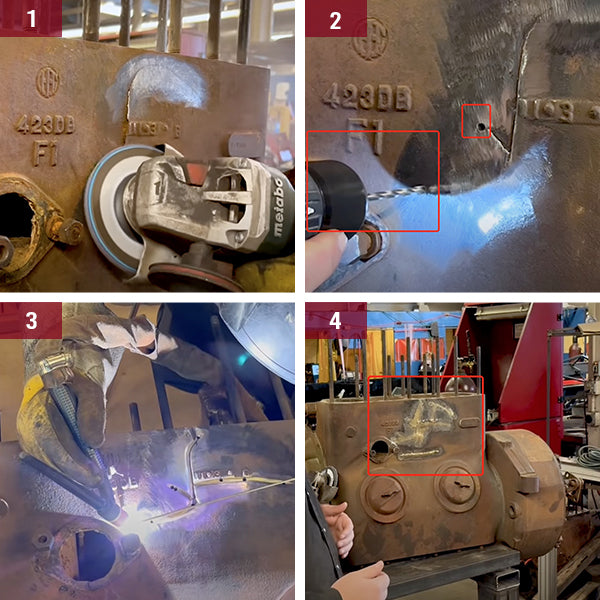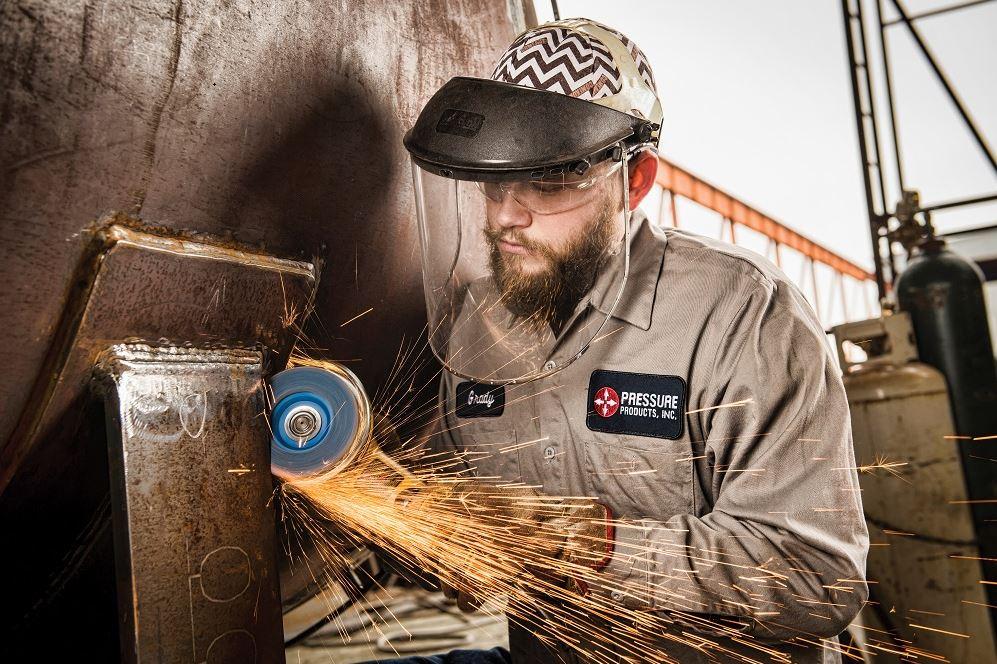Everything about Welding: Key Insights Into Techniques and Best Practices for Success
Welding encompasses a variety of strategies, each suited for specific materials and applications. Recognizing these approaches, such as GMAW, SMAW, and TIG, is vital for accomplishing optimal results. The appropriate equipment and safety practices can not be overlooked. As prep work and repairing play critical functions in the welding procedure, understanding these elements can greatly boost the quality of the end product. What are the key factors that guarantee an effective weld?
Comprehending Different Welding Techniques
Welding methods include a range of techniques, each fit to certain applications and materials. Amongst the most common methods are Gas Steel Arc Welding (GMAW), Shielded Metal Arc Welding (SMAW), and Tungsten Inert Gas Welding (TIG) GMAW, also called MIG welding, is preferred for its rate and convenience, making it perfect for slim materials. SMAW, or stick welding, is preferred for its simpleness and effectiveness in exterior atmospheres, especially with thicker steels. TIG welding uses precision and control, making it ideal for elaborate job and non-ferrous metals (Belgrade Welding). Each technique has its special advantages and considerations, allowing welders to select the most effective technique based on the task's demands, product kind, and desired outcomes. Understanding these methods is essential for successful welding
Crucial Welding Equipment and Tools
While various welding methods require certain abilities, the right tools and devices are just as vital for attaining quality results. Crucial welding devices consists of welding machines, which differ relying on the technique-- such as MIG, TIG, or stick welding. Protective gear, including headgears, gloves, and aprons, guarantees safety and comfort during the process. In addition, fixtures and clamps aid protect products in location, ensuring precision in welds. Consumables like welding poles, wire, and shielding gas are also important elements that influence the quality of the weld. Furthermore, tools such as cutters and mills promote surface area preparation and post-weld completing, adding to a professional outcome. Purchasing top quality tools ultimately enhances the effectiveness and efficiency of welding projects.
Safety Practices in Welding
Proper safety techniques are crucial in the welding industry to secure workers from possible risks. Welders need to wear ideal personal protective tools (PPE), including helmets with correct shading, gloves, and flame-resistant apparel. Appropriate ventilation is essential to lower direct exposure to damaging fumes and gases generated throughout the welding procedure. Furthermore, workers must be trained in the right handling of welding tools to stop mishaps. Fire precaution, such as maintaining flammable materials far from the welding area and having fire extinguishers easily available, are necessary. Routine examinations of devices and workspaces can help recognize potential dangers prior to they result in crashes. By adhering to these security techniques, welders can create a more secure working atmosphere and lessen risks connected with their trade.
Readying Products for Welding
Preparing products for welding is a vital step that greatly influences the quality and stability of the final product (Montana Mobile Welding and Repair Belgrade). Appropriate preparation involves cleaning the surface areas to eliminate impurities such as oil, dirt, and rust, which can compromise the weld. Strategies such as grinding, fining sand, or using solvents are frequently employed to accomplish a tidy surface area. Additionally, making sure that the materials mesh snugly is important; gaps can result in weak welds. It's likewise crucial to take into consideration the positioning and positioning of the elements, as this will affect the simplicity of welding and the last end result. Lastly, choosing the ideal filler product and making sure compatibility with the base metals is vital for achieving solid, resilient welds
Tips for Achieving High-Quality Welds
Attaining high-quality welds needs interest to information and adherence to best techniques throughout the welding process. Correct joint prep work is crucial, guaranteeing surface areas are free and tidy from pollutants. Selecting the appropriate filler product and welding technique based on the base steels is crucial for excellent bonding. Keeping consistent travel rate and angle while welding can promote and stop issues harmony. Furthermore, regulating warmth input is vital; excessive warmth can result in warping and damaged joints. On a regular basis checking the welds during the procedure enables immediate adjustments if necessary. Using appropriate post-weld therapies, such as cleansing and stress and anxiety relief, can boost the toughness and honesty of the weld, ultimately ensuring an effective outcome.
Repairing Typical Welding Issues
Welding typically presents obstacles that can influence the top quality and integrity of the final item. Typical problems such as porosity, irregular weld beads, and overheating can emerge, each requiring specific troubleshooting strategies. Recognizing these problems is essential for welders to enhance their skills and attain suitable outcomes.
Porosity Issues Discussed
Although porosity can typically be neglected, it continues to be an essential problem in welding that can endanger the integrity of an ended up product. Porosity describes the visibility of little gas pockets within the weld grain, which can lead and weaken the joint to premature failing. This issue normally emerges from contaminants, wetness, or improper protecting gas protection during the welding procedure. To alleviate porosity, welders ought to confirm that the base materials are clean and completely dry, utilize proper securing gases, and keep constant welding specifications. Consistently evaluating the devices and environment can likewise aid determine possible concerns prior to they show up in the weld. Attending to porosity successfully is important for attaining strong, durable welds that meet top quality standards.

Inconsistent Weld Beads
Inconsistent weld beads can greatly affect the quality and toughness of a finished item. Different factors add to this problem, consisting of incorrect travel rate, incorrect amperage settings, and irregular electrode angles. When the welder moves as well promptly, a grain may show up slim and lack penetration, while moving also gradually can trigger extreme accumulation. In addition, fiber laser welding making use of the wrong amperage can result in either undercutting or extreme spatter, both of which compromise weld integrity. The welder's strategy, such as inconsistent torch activity, can also i was reading this cause irregular bead look. To mitigate these troubles, welders ought to concentrate on keeping steady, controlled motions and making certain correct devices setups to achieve harmony in their welds. Consistency is vital to accomplishing reliable and strong welds.
Overheating and Bending Issues
Too much warmth during the welding procedure can lead to significant getting too hot and warping concerns, affecting the architectural integrity of the workpiece. These troubles usually manifest as distortion, which can jeopardize alignment and fit-up, making more assembly testing. Aspects contributing to overheating include the choice of welding parameters, such as voltage and travel rate, as well as the type of material being welded. To minimize these concerns, welders need to keep constant traveling speed and proper warmth input while keeping track of the work surface temperature level. Additionally, preheating or post-weld warmth therapy can help minimize anxieties triggered by quick cooling - Belgrade. Normal evaluation and adherence to finest practices are crucial in avoiding overheating and guaranteeing the long life and reliability of welded frameworks
Often Asked Concerns
What Are the Career Opportunities in the Welding Sector?
The welding industry supplies diverse profession opportunities, consisting of positions as welders, engineers, instructors, and inspectors. Professionals can operate in manufacturing, construction, aerospace, and vehicle industries, gaining from solid need and affordable incomes in numerous roles.
Exactly How Can I Enhance My Welding Rate Without Compromising Top Quality?
To enhance welding speed without compromising quality, one need to exercise effective techniques, keep devices, enhance setups, and improve hand-eye control. Regular training and looking for feedback can likewise greatly add to achieving much faster, top electrode notch welds.
What Accreditations Are Readily Available for Welders?
Countless accreditations exist for welders, consisting of those from the American Welding Society (AWS), the National Facility for Construction Education and Research (NCCER), and various industry-specific organizations. These credentials enhance employability and demonstrate skill proficiency.
Exactly How Does Welding Affect the Features of Metals?
Welding affects the residential properties of metals by altering their microstructure, which can result in adjustments in ductility, stamina, and hardness. Warmth input and cooling prices during the process greatly influence these product features.
Can I Weld Dissimilar Metals With Each Other?
